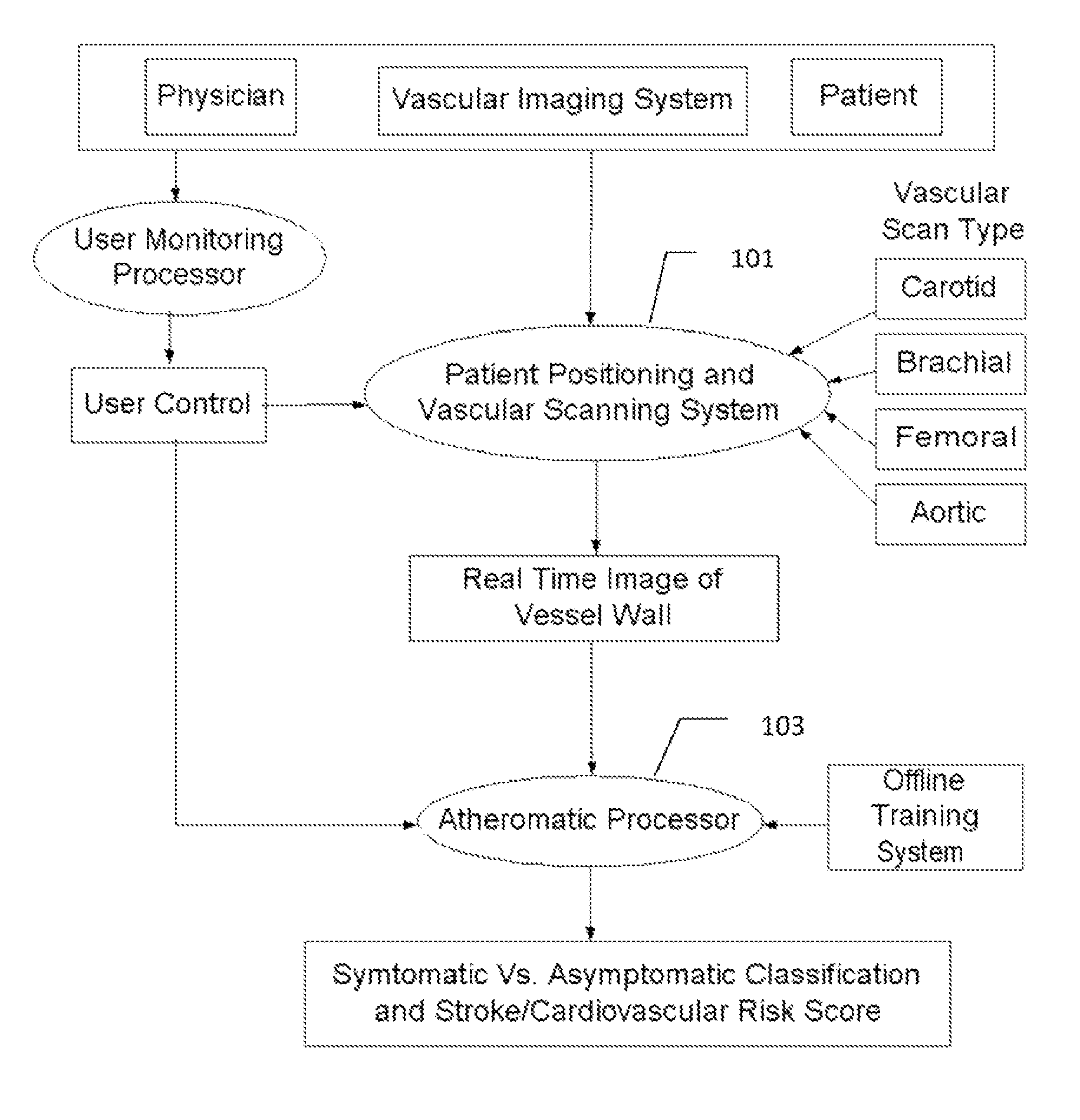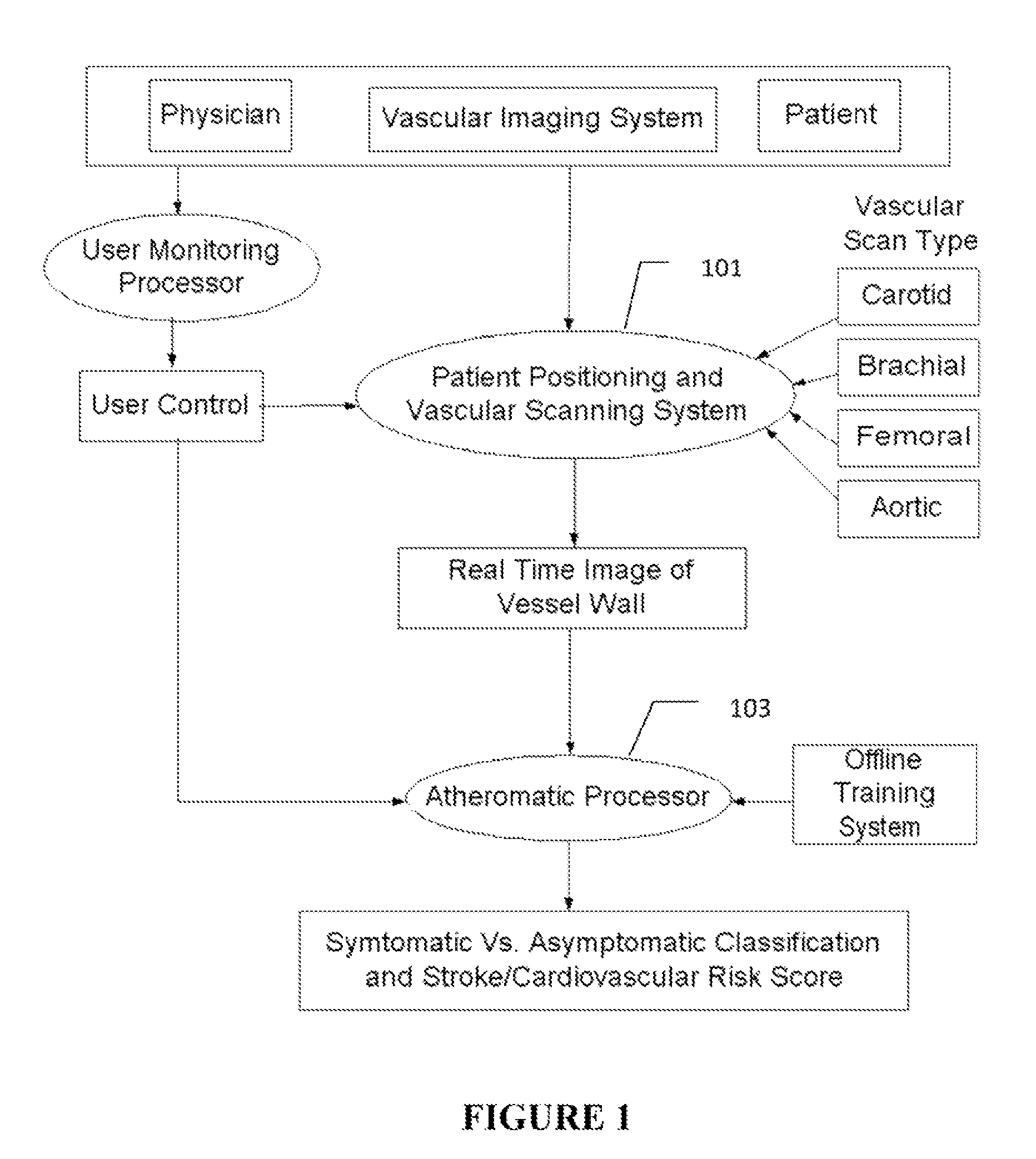Imaging based symptomatic classification using a combination of trace transform, fuzzy technique and multitude of features
a trace transform and classification technology, applied in the field of medical image processing, can solve the problems of limiting the blood supply to the involved organs, affecting the quality of life of patients, and affecting the quality of life of patients, and achieves significant accuracy and high accuracy
- Summary
- Abstract
- Description
- Claims
- Application Information
AI Technical Summary
Benefits of technology
Problems solved by technology
Method used
Image
Examples
Embodiment Construction
[0007]Atherosclerosis is a degenerative disease of the arteries that results in the formation of plaques, and consequent narrowing of blood vessels (stenosis). Characterization of carotid atherosclerosis and classification of plaque into symptomatic or asymptomatic along with the risk score estimation are key steps necessary for allowing the vascular surgeons to decide if the patient has to definitely undergo risky treatment procedures that are needed to unblock the stenosis. This application describes a (a) Computer Aided Diagnostic (CAD) technique for symptomatic versus asymptomatic plaque automated classification of carotid ultrasound images and (b) presents a cardiovascular risk score computation in longitudinal 2D Ultrasound, cross-sectional MR, CT and 3D Ultrasound and 3D IVUS. We show this for Ultrasound, CT and MR modalities and extendable to 3D Carotid Ultrasound and 3D IVUS.
[0008]The on-line system consists of Atherosclerotic Wall Region estimation using AtheroEdge™ (for l...
PUM
 Login to View More
Login to View More Abstract
Description
Claims
Application Information
 Login to View More
Login to View More - R&D
- Intellectual Property
- Life Sciences
- Materials
- Tech Scout
- Unparalleled Data Quality
- Higher Quality Content
- 60% Fewer Hallucinations
Browse by: Latest US Patents, China's latest patents, Technical Efficacy Thesaurus, Application Domain, Technology Topic, Popular Technical Reports.
© 2025 PatSnap. All rights reserved.Legal|Privacy policy|Modern Slavery Act Transparency Statement|Sitemap|About US| Contact US: help@patsnap.com



